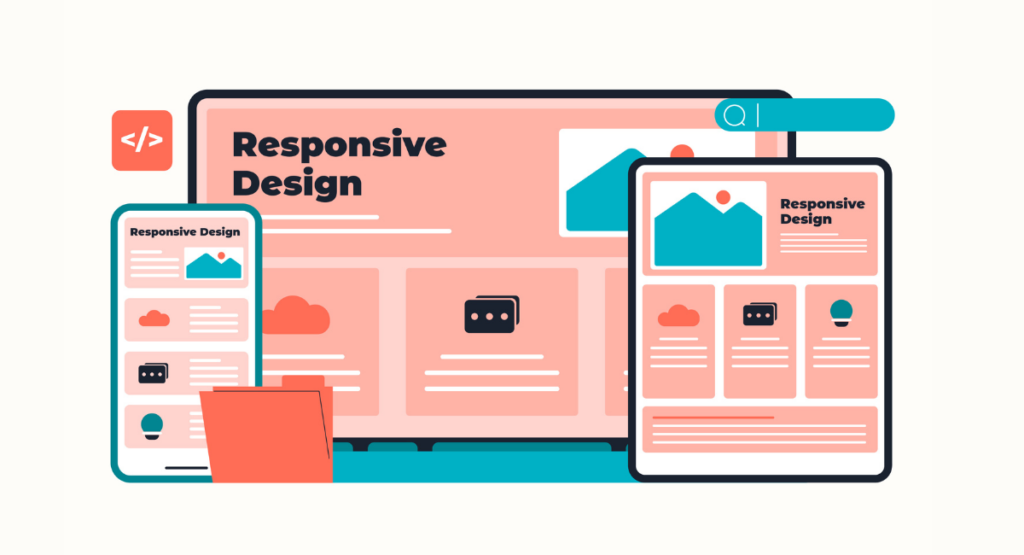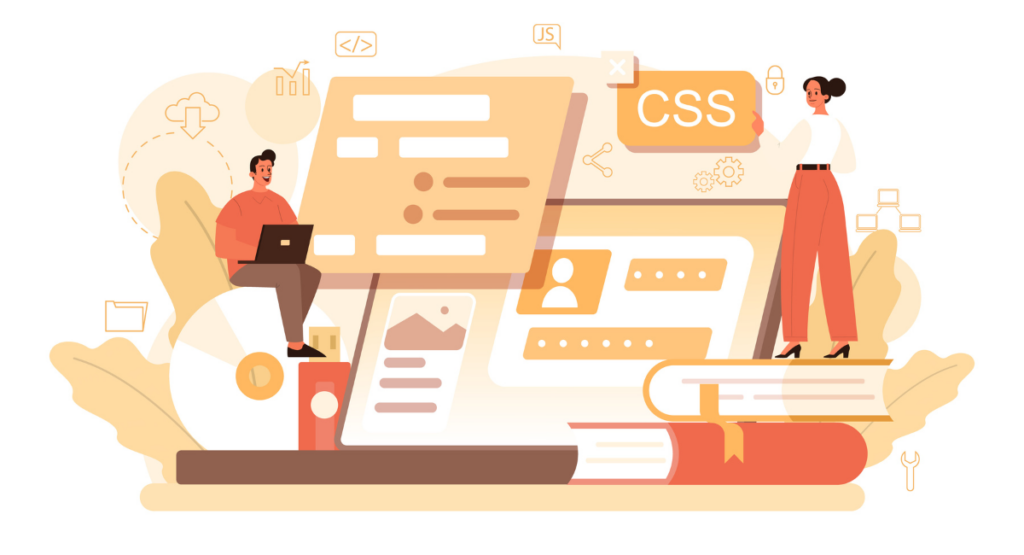Responsive design is essential in today's digital landscape, where devices with varied screen sizes—from smartphones to large desktop monitors—are used to access the internet.
CSS (Cascading Style Sheets) plays a pivotal role in creating visually appealing and functional websites across all these devices. Among CSS's most valuable tools for achieving responsive design are media queries.
Understanding and mastering CSS media queries is crucial for web developers aiming to create optimal responsive websites that provide a seamless user experience regardless of device.
This blog will guide you through the fundamentals of CSS media queries and offer practical tips to enhance your responsive designs.
Importance of Responsive Design

Definition of Responsive Design
Responsive design is an approach in web development where a website is crafted to provide an optimal viewing and interaction experience across a wide range of devices, from desktop monitors to mobile phones and tablets.
This approach involves the website dynamically adjusting its layout, text size, and navigation elements to fit the screen size and resolution of different devices, ensuring the content is readable and accessible without requiring the user to manually resize anything for better viewing.
Significance of Responsive Design in the Digital Age
In the digital age, where the usage of mobile devices to access the internet surpasses that of desktop computers, responsive design has become a fundamental aspect of web development.
This design strategy enhances user experience drastically, which in turn affects customer retention and engagement. Websites that are not optimized for mobile devices often face challenges with usability, which can frustrate users and potentially drive them away to competitors.
Additionally, responsive design is crucial for SEO as search engines like Google rank mobile-friendly websites higher in their search results.
This makes responsive design not just a matter of aesthetic or trend, but a critical component of modern web strategy that impacts visibility, user engagement, and ultimately, the success of a business online.
Understanding CSS Responsive Media Queries

Explanation of CSS Media Queries
CSS Media Queries are a feature of CSS3 that allow content rendering to adapt to different conditions such as screen resolution, device orientation, and screen size.
By using media queries, developers can specify different styles for different browser and device circumstances. This technique is the backbone of responsive design, enabling the stylesheet to react to the physical characteristics of the device on which the site is being displayed.
For instance, a CSS media query might include a rule to apply a specific set of styles when the browser window is less than 600 pixels wide.
Benefits of Using Media Queries in Web Development
Media queries enhance the flexibility and accessibility of websites by allowing a single set of HTML and URL to serve multiple devices. Here are several benefits:
- Improved User Experience: Tailoring the layout of the website to fit the device it is being viewed on makes navigation easier and more intuitive for the user.
- Cost Efficiency: Using media queries reduces the need to create separate sites for mobile and desktop, lowering both development and maintenance costs.
- Better Performance: Optimized sites mean faster loading times and less data consumption on mobile devices, which is crucial for users with limited data plans.
- Increased Reach: Responsive websites are functional and appealing on any device, thereby increasing the potential audience base.
- SEO Advantages: Mobile-optimized sites are prioritized by search engines, improving a site's organics search rankings and visibility.
These features make media queries an indispensable tool in creating responsive websites that are efficient and effective across all types of devices.
Implementing Media Queries for Optimal Responsive Design
Best Practices for Using Media Queries
When incorporating media queries into your responsive design, it's essential to adhere to several best practices to ensure a seamless user experience across all devices. First, use logical breakpoints based on content, rather than device sizes.
This means defining your media queries around the point where your content begins to look disproportionate or awkward, rather than universally applying the typical device dimensions (like those for tablets and smartphones).
Additionally, always design mobile-first, which entails starting with the smallest screen and working up. This approach typically results in faster-loading and less resource-intensive styles for smaller devices.
Finally, keeping your CSS clean and organized by grouping all media queries at the end of your CSS document or in a separate stylesheet can significantly enhance maintainability and readability.
Examples of Media Queries in Action
To illustrate, consider a simple responsive web design scenario: you have a container that needs to adapt across different screen sizes. For small screens, it should take up 100% of the viewport width; for medium screens, 50%; and for large screens, 33.3%. The CSS would look something like this:
\`\`\`css
.container {
width: 100%;
}
@media (min-width: 600px) {
.container {
width: 50%;
}
}
@media (min-width: 1000px) {
.container {
width: 33.3%;
}
}
\`\`\`
This code snippet shows media queries being applied to adjust the width of a \`.container\` class as the device's viewport width increases.
Common Mistakes to Avoid in Media Query Implementation
One common error in using media queries is overuse, which can lead to bloated CSS files and slower website performance. Instead, use them sparingly and only when necessary.
Another frequent mistake is setting too many specific breakpoints. This practice not only complicates your stylesheet but it might not cover all devices effectively.
Targeting popular device dimensions instead of focusing on content can also lead to designs that don't quite fit properly on all screens. Lastly, neglecting to test on actual devices or only testing on high-end devices can prevent you from spotting issues faced by users on older or less common devices.
Advanced Techniques for Mastering CSS Responsive Media Queries
Using Breakpoints Effectively
Understanding and implementing effective breakpoints within media queries is crucial for sophisticated responsive designs. Breakpoints should not be arbitrary but rather derived from the natural breakpoints of the site's content or significant changes in the design layout.
For example, a breakpoint is typically needed when a single column layout on a mobile device needs to change to a multi-column layout on a desktop.
It’s useful to create a set of standard breakpoints (for instance, 320px, 480px, 768px, 1024px, and 1280px) that can be consistently applied across multiple projects.
Creating Scalable Designs with Media Queries
Scalability in responsive design means that your designs work and look good on any device, irrespective of its screen size or resolution. To achieve this, employ relative units like percentages for width, ems for font sizes, and viewport units for layout dimensions.
These units ensure that your design elements scale according to different screen sizes. Additionally, consider the use of CSS Grid and Flexbox, which can dynamically adjust both layout spacing and element sizing based on the viewport without needing predefined sizes in your media queries.
Testing and Debugging Responsive Designs
Thorough testing is critical to ensure that designs render as intended on various devices. Use device emulation tools available in most modern web browsers to simulate different screen sizes and resolutions.
This approach helps identify specific CSS issues that might not be apparent in a responsive test suite. Moreover, employing a mobile-first design strategy helps streamline the debugging process, as it allows you to first solidify performance in a minimalistic environment and progressively enhance it for larger screens.
Additionally, regular testing on actual devices, where feasible, should be part of your testing routine to catch unexpected behaviors and ensure that media queries are correctly applied.
Book a Demo and experience ContextQA testing platform in action with a complimentary, no-obligation session tailored to your business needs.
Conclusion
In the ever-evolving landscape of web development, mastering CSS media queries is essential for creating responsive designs that are both functional and visually appealing across all devices.
By understanding and using different media features like width, height, and orientation, you can ensure your website delivers an optimal user experience.
Remember, the key to effective responsive design lies in testing your site on various devices and continuously adapting to new technology trends. Keep experimenting and refining your approaches to stay ahead in the digital space!
Also Read - 11 Best CSS Grid Layout Generators For 2024
